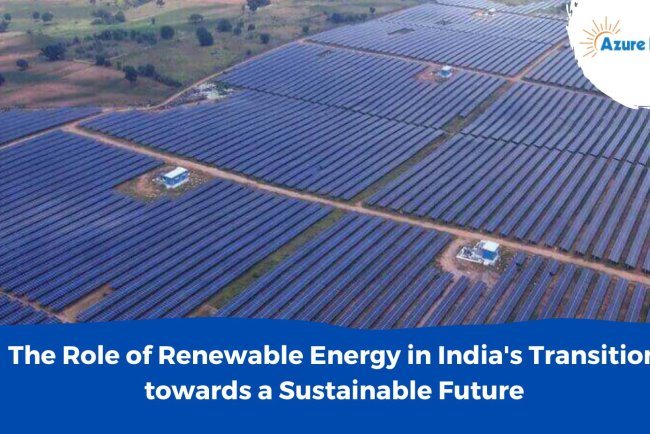Utility-Scale Solar and Energy Storage: The Future of Reliable Clean Energy
The world is experiencing a transformative shift towards renewable energy, with utility-scale solar projects playing a crucial role in this transition.

The world is experiencing a transformative shift towards renewable energy, with utility-scale solar projects playing a crucial role in this transition. As nations work to meet climate goals and reduce carbon emissions, solar energy has emerged as one of the most promising solutions. However, for solar power to fully replace traditional energy sources, the integration of energy storage systems is becoming essential. This combination not only ensures reliable power supply but also strengthens the grid's stability, paving the way for a future dominated by clean energy.
What Is Utility-Scale Solar?
Utility-scale solar refers to large solar farms that generate electricity on a massive scale, typically for distribution through the grid to homes and businesses. Unlike rooftop solar systems designed for individual use, these solar farms can produce enough electricity to power entire cities. Top solar power companies worldwide are leading the way by constructing and managing these massive projects, which often cover hundreds of acres.
The Role of Energy Storage in Solar Power
While utility-scale solar is an efficient and eco-friendly way to produce energy, it has one significant limitation: solar power generation only happens during daylight hours. This makes it challenging to meet energy demand around the clock, especially during the night or cloudy days.
This is where energy storage comes in. By storing excess electricity generated during the day in batteries, utility-scale solar farms can provide a consistent power supply even when the sun isn't shining. Battery storage systems allow for the energy produced during peak sunlight hours to be used during times of high demand or when renewable energy generation is low.
How Solar-Plus-Storage Systems Work
In a solar-plus-storage system, energy generated by solar panels is stored in large batteries for later use. These systems help ensure that electricity is available when it’s needed most, allowing solar farms to operate similarly to traditional power plants. Large utility-scale solar projects often integrate these storage systems to offer a reliable power solution that can be dispatched on demand.
his seamless energy integration makes renewable energy a more practical choice for utilities, reducing reliance on fossil fuels and helping stabilize the grid. In areas with high renewable energy penetration, these storage solutions are essential for maintaining grid reliability and preventing blackouts.
Benefits of Combining Solar with Storage
1. Increased Reliability: Energy storage enhances the reliability of solar power by ensuring energy is available during non-sunlight hours. This is especially important for utilities needing a steady power supply for their customers.
2. Grid Stability: Utility-scale solar projects with storage systems can provide services such as frequency regulation and grid balancing, which are critical for maintaining the stability of the power grid.
3. Cost Savings: Over time, the cost of energy storage is expected to continue declining, making solar-plus-storage projects more affordable for utility companies and consumers alike.
4. Sustainability: By replacing fossil fuel plants with clean energy from utility-scale solar projects and storage, the world can significantly reduce greenhouse gas emissions, contributing to global sustainability goals.
The Future of Renewable Energy with Solar-Plus-Storage
As the world’s top solar power companies continue to innovate, the integration of energy storage systems with utility-scale solar farms is expected to become the standard. This evolution will not only help meet the growing demand for renewable energy but also ensure that clean, reliable power is available at all times.
Countries across the globe are making significant investments in solar-plus-storage projects as part of their long-term renewable energy strategies. These projects are proving that large-scale solar, combined with energy storage, can deliver the reliability and consistency needed to replace traditional fossil fuel plants.
Conclusion
Utility-scale solar and energy storage represent the future of reliable clean energy. By integrating storage systems into large solar farms, top solar power companies are addressing one of the most significant challenges in renewable energy: intermittency. The result is a power system that is not only sustainable but also dependable, bringing us one step closer to a world powered entirely by renewable energy sources.
As utility-scale solar and energy storage technologies continue to evolve, they will play an increasingly vital role in transforming the energy landscape, ensuring that renewable energy becomes the foundation of the global power grid.
What's Your Reaction?

































